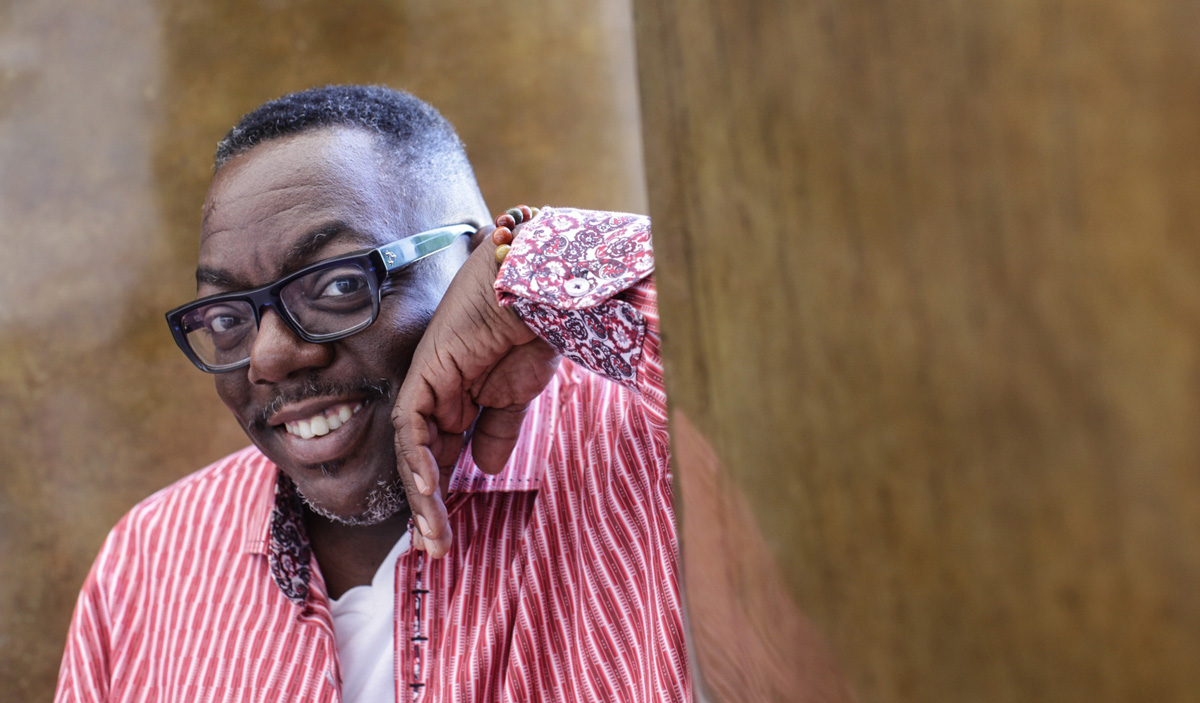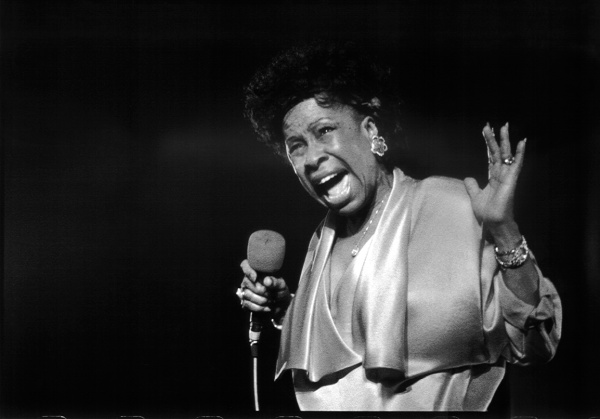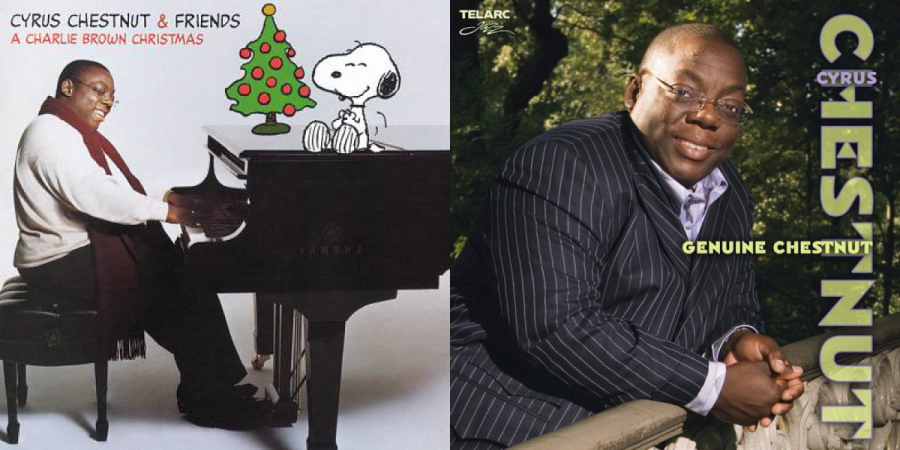A Musical Introduction to Cyrus Chestnut

“I started playing piano at the age of three,” jazz pianist Cyrus Chestnut once explained in an interview. “My father was an organist for the local church in Baltimore, where I grew up. One day, I saw him playing the piano, so I got up and tried to do what he did.”
Born in 1963, Cyrus was playing piano at the Mount Calvary Star Baptist Church in Baltimore by the age of six. Speaking of this apprenticeship in church, Cyrus says, "It was my job to figure out the keys and chords behind vocalists. People would sing in all twelve keys and modulate, and I'd have to follow them. Playing for the choir you had to give support. At the end of the preacher's sermons, I'd provide the musical 'amen.' You listen in church and use your ears - it wasn't about you but what you could contribute to the whole."
“When I was nine, I went into a Woolworths Department Store with a pocket full of money looking to buy some new records," he told an interviewer in 2018. "I started looking around in a discount record bin when I picked up a record by this guy with a cool name. So, I bought the album, and it changed the way I thought about music.”
Thelonious Monk was the cool name he read, and Cyrus never looked back. That year he began studying classical music at the Peabody Preparatory Institute in Baltimore, and in the fall of 1981, he began jazz education in Boston at the Berklee College of Music.
After graduating, he found popularity as a sideman, working throughout the late eighties and early nineties with well-known artists including Wynton Marsalis, Terence Blanchard and others.

Then Cyrus joined forces with legendary singer Betty Carter, and he has referred to this pairing as his "graduate school." Case in point: in an interview with Neon Jazz, Cyrus told a story of how Carter's trio were warming up the audience for her concert by playing Miles Davis' arrangement of "If I Were a Bell." After they played the original arrangement "right down to the letter," Carter glared at Cyrus as she entered the stage to sing.
After the set, Carter lit into him backstage.
“Betty Carter was a tough cookie," he explained. "She taught me so many things about performing and life. There was never any compromise working with her. She encouraged me to push the envelope and never allow myself to be typecast. That would be the death of your creativity."
“We were working our way through a set when I was just playing the regular run like I’d played the night before and Betty gave me the look," he remembered. "And if looks could kill … well, I wouldn’t be here talking to you. Anyway, I went back to my dressing room when she knocked and came in and told me 'I didn't hire you to play something that I already know! Find a different way to play it!'”
Cyrus has indeed never been typecast and has established himself at the top of the scene. Let us take a listen through his discography to hear what a special artist he has become.
Early Career

While gaining experience as a sideman in the eighties and early nineties, Cyrus started developing as a leader. "The Nutman Speaks" (1992) and "The Nutman Speaks Again" (1992) were his first commercially released albums.
Reviewer Ken Dryden noted his swinging version of Massenet's "Elegie," a tense "Caravan" and a sparkling "Duke's Place" accompanied by “two equally talented young lions, bassist Christian McBride and drummer Carl Allen.”
Following the success of those debut albums, in the summer of 1993 Cyrus signed with Atlantic Records and released several critically acclaimed albums over the following years including "Revelation" in 1994, "Earth Stories" in 1996 and the self-titled "Cyrus Chestnut" in 1998.
In a review of the 1994 release, Brian Bartolini remarks, “Both accessibility and virtuosity mark Chestnut's jazz playing, and his affinity for spirituals, hymns and down-home blues is evident in his emotional approach. He is fond of building momentum -- almost as if he were an evangelical preacher -- with repetitive and extended right-hand runs.”
1996’s "Earth Stories" was Cyrus' third recording for Atlantic in as many years. Stereophile chose it as a recording of the month noting, “This one places him on a very short list of pianists who give promise of becoming the next major jazz voices on their instrument. Some aspects of his talent make you think of Tatum and Peterson: the control over the full keyboard, the touch that can segue from riveting percussives to silken caresses mid-phrase, the sudden sweeps of harmonic color. But Chestnut is so much bluesier and churchier than his antecedents. Even his most liberated architectures let you catch glimpses of those gospel choirs in Baltimore where he got his start.”
“Cyrus Chestnut” was the name of the release in 1998. One review noted that “Cyrus Chestnut proves once again that he is among the brightest, post-bop players of his generation.” Several guest artists joined the project including Grammy Award-winning R&B artist Anita Baker.
2000s

In 2000, Cyrus paid tribute to his favorite cartoonist, Charles Schultz, and first jazz influence, Vince Guaraldi, in his interpretation of the classic "Charlie Brown Christmas," which had guest appearances by Vanessa Williams, Brian McKnight, The Manhattan Transfer, the Boys Choir of Harlem and others.
"Genuine Chestnut" was Cyrus’ first release on the lauded Telarc label in 2006, and it included riffs on popular songs, including “If,” the early seventies soft-rock ballad by Bread. Cyrus explained, “This song has been with me ever since the sixth grade. I had to play it for my English teacher’s wedding. I’ve played it in many and various contexts. I actually played it in a Top 40 band when I was just out of school. A lot of time has passed, but then recently I just started thinking about it again.”
In another example of how Cyrus refuses to be typecast, in 2007 despite having little familiarity with the music of Elvis Presley, he released an album of Elvis songs. The two artists’ shared affinity for gospel tunes comes alive in an endearing rendition of "How Great Thou Art."
To the Present
Cyrus has recorded over one hundred albums with jazz greats like Roy Hargrove, Terence Blanchard and Dee Dee Bridgewater as well as pop artists including Elvis Costello and Bette Midler. And he continues to seek new musical ground.
In 2019, his work with jazz string ensemble Turtle Island Quartet was highlighted on NPR’s Jazz Night in America. Describing their collaboration, Cyrus stated, “It is great to be in an environment that inspires growth.”
And his two most recent albums have continued to push boundaries. JazzTimes described his 2018 release, “Kaleidoscope,” as “serious play at its most elegant and satisfying. Cyrus Chestnut takes on fare ranging from original compositions through the works of Mozart, Ravel, and Satie, along with a hymn, a classic from the Great American Songbook, and most audaciously, a scrap from the heavy metal slag heap, enriching it all with zest, good humor, and unflagging craftsmanship. Chestnut is that rare artist whose work is as welcoming, even reassuring, as it is bold."
Here is his version of Maurice Ravel’s “Entre Cloches”:
Cyrus’ latest album, “My Father’s Hands” was released in 2022. Critic Matt Collar provides an introduction:
With the death of Cyrus Chestnut's 85-year-old father, McDonald Chestnut, in 2021, the pianist lost not only his most passionate supporter but the man who first taught him to play. A self-taught pianist and organist, the elder Chestnut played in church (along with his wife, a choir director). He introduced the younger Chestnut to classical piano, gospel, and traditional spirituals, setting Cyrus on the path to eventually become one of the most accomplished jazz musicians of his generation. With 2022's "My Father's Hands," Chestnut pays tribute to his dad, crafting a heartfelt album that touches upon jazz and pop standards, Latin rhythms, and originals.
Legacy
Cyrus currently holds the position of master instructor of jazz piano and improvisation at Howard University. He continues to tour and record as a soloist, with his own groups, and as a high-level sideman at noted jazz festivals and venues.
Reflecting upon his style in an interview with the Pace Report, he said "I can study and play the baroque, but no, that's not me, I want to be inspired by the baroque. I grew up with Parliament, Little Richard (my momma had the CDs), King Curtis, Thelonious Monk - it's all these influences. All I'm trying to do is operate from what's been given to me and then present it."
He further elaborated with iRockJazz: "If I'm going to be honest about who I am, there's the element from the church that has to be present not in a separate way but in a collective way. Anything that I play could have elements of a hymn or some type of gospel tinge."
Let us end with how he described himself to Neon Jazz:
"A person who loves music. A servant for humankind, doing what I can to make the world a better place. Doing everything I can. I strive to change the world into a better place using one rhythm, one melody, and one harmony at a time."
---